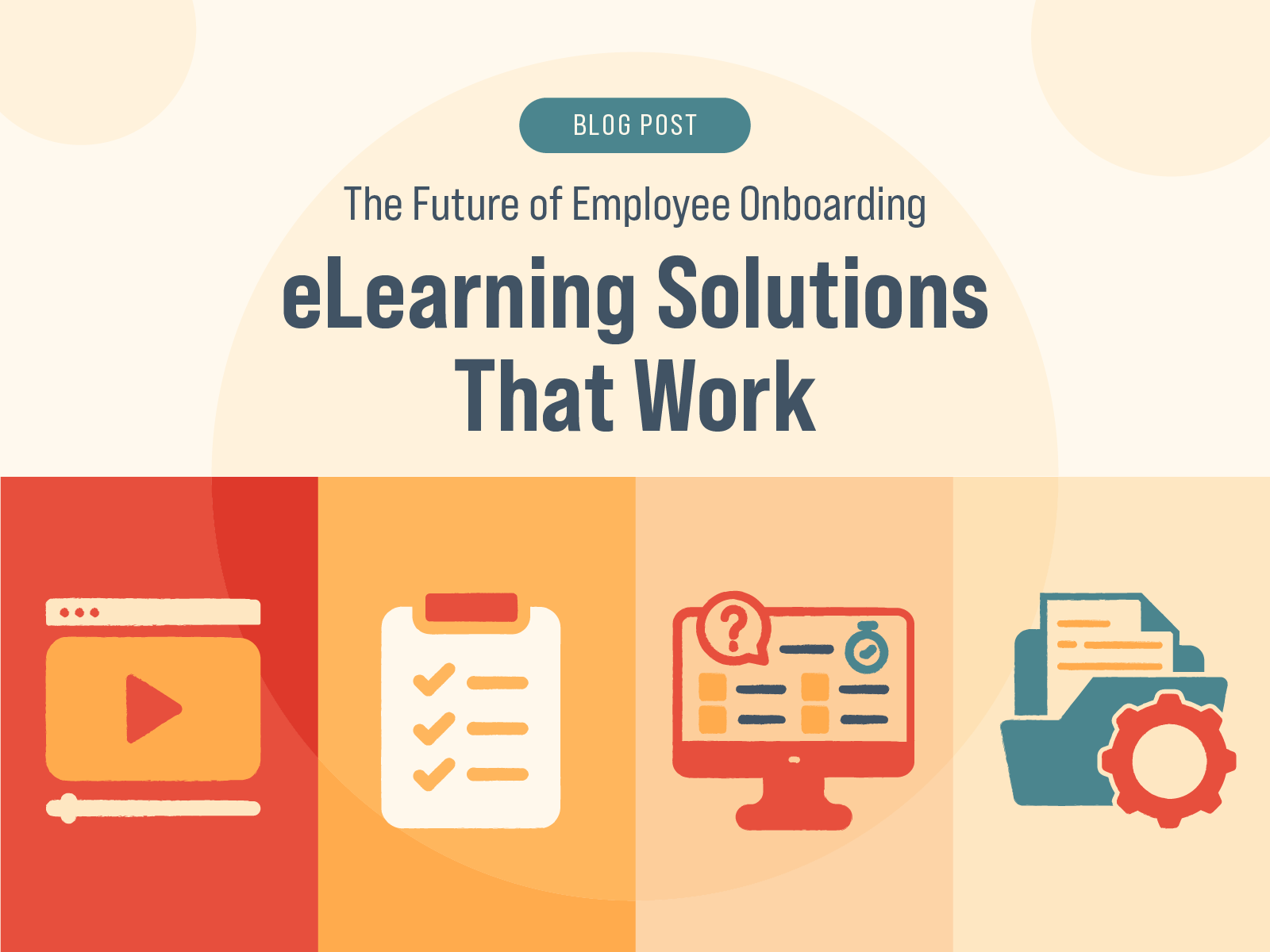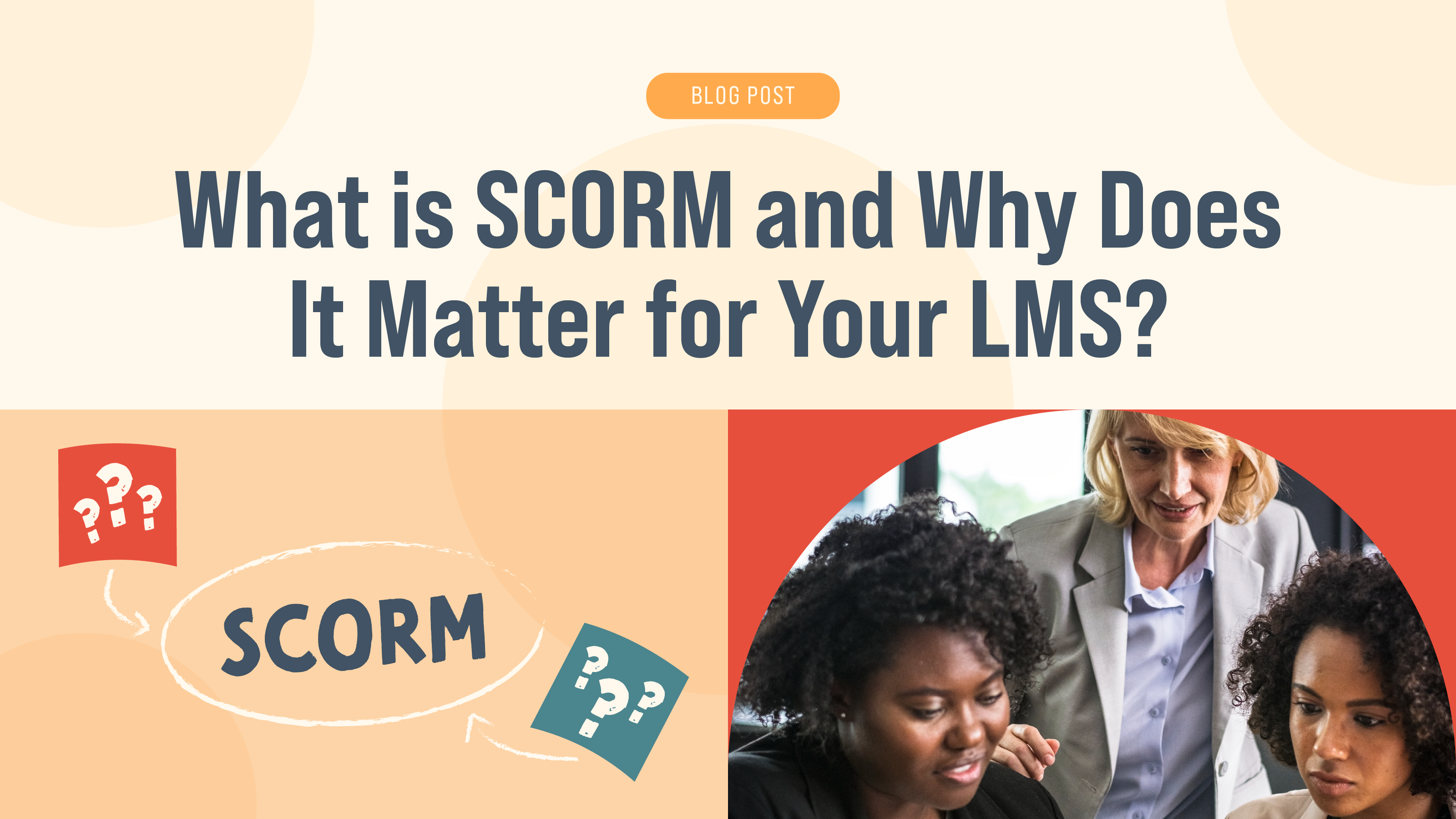How to Create Great eLearning Content: 9 Tips
eLearning is an incredibly effective avenue for teaching new material. More and more organizations are turning to online instruction for employee training, onboarding, continued education and so much more. But creating eLearning content can be tricky for those who haven’t done so before. Here are some tips from our experts at Allegro Media Design.
1. Use A Mix Of Multimedia
It may seem challenging to turn real-world content into an online learning experience, but there are many powerful tools at your fingertips to convey the information. You can tap into mediums such as video, audio, animations, and other interactive functionality that makes learning that much easier. By using a mixture of mediums in your eLearning content development, you appeal to many different types of learners who may not learn the material in the same way.
Use your custom eLearning course to step away from textbook-based material and deliver a more engaging method for learning in your organization.
2. Keep Everything Organized
Don’t underestimate the power of organization when determining how to develop eLearning content for any industry. While it is tempting to fill every last course with a huge volume of charts, videos, PowerPoints, etc., make sure that there is thought to the process. If you incorporate too many formats in a cluttered manner, your audience will have a difficult time keeping track of the course information that is so important.
Make sure to keep the visual interface as clean and attractive as possible. This approach can help keep your students motivated and minimize any frustration that they may feel along the way.
3. Construct A Story
If you want to create an instant connection with your audience when creating eLearning content, use a story-based module. You offer them a real-world scenario they can relate to instead of using an arbitrary example. These scenarios can take your reader out of the work setting and show them the value of this knowledge.
Story-based modules are also ideal for representing challenges that your learner could face in addition to relatable characters they could encounter. Use these stories to show employees how they can apply their knowledge in their personal and professional lives.
4. Seek Out Experts

Before you rush into how to develop eLearning content, make sure you’ve tapped on subject matter experts for guidance on the topics that you cover. Collaboration is a huge part of the course creation process, so make sure to seek input from video and audio specialists, teachers, communication professionals, or anyone else who can provide value to the course development process.
Although it may seem tedious to talk to so many people before moving forward with the course, doing so can produce a highly targeted and impactful course that will be useful for years to come.
5. Keep Your Goals Clear
Creating course content without having a clear goal will be a waste of time and resources. Before you delve into creating eLearning content, make sure to have a clear understanding of what you want your students to know as well as the takeaways they should have at the end of each session.
Unclear or ambiguous goals can make the content writing process that much harder. Instead, outline the steps that the students must take to reach the final goal. From there, you will be able to develop meaningful course content to support these goals.
6. Put Yourself in The Students’ Shoes
You may be concerned about how effective your course content will be while creating it. A simple way to determine this is to put yourself in the shoes of a learner and return to a beginner’s mindset. Are there topics that you didn’t know but wish you did? Were there any pieces of advice that helped you along the way? Were there certain approaches that had a large impact on you? Don’t forget to go back to the basics and put yourself in the shoes of the learner. With practice, shifting your mindset will become easier.
7. Keep Things Interactive

The top eLearning content development approaches always include an element of interactivity. This helps to speed up the learning and retention process and make it more enjoyable for your employees or audience along the way.
Regardless of the audience’s age, make sure to explain concepts through diagrams, videos, and animations. You should also include a balance of formative information as well as feedback, to sum up, the information that’s been conveyed. For example, quizzes at the end of sections can add more value to the process and embed important information in the minds of your audience.
8. Integrate Mobile Learning
Let’s face it, our phones are integrated with every aspect of our lives. Use this fact to your advantage when strategizing on your eLearning course content. The material and course design should be tailored toward both desktop and mobile devices. In addition, consider putting together microlearning modules that are tweaked specifically for mobile devices. Doing so can help convey a single topic in-depth without overwhelming the learner.
9. Keep It Short and Simple
When it comes to putting together eLearning content development solutions, less is always more. Research shows that learners prefer short content over long, one-time training courses. It can be trickier to put together shorter modules as the content needs to be more focused and carefully selected. Make sure to only include content that is necessary for helping to achieve the desired outcomes. Remember that your learners are busy, don’t overwhelm them with too much information or take up too much of their time.
Turn to Allegro Media Design for Impactful eLearning Content
If you’re interested in professional guidance for eLearning content help, there’s no better team than Allegro Media Design. We have years of experience creating custom eLearning courses for a range of industries and businesses. Please contact us to learn more about our process and how we can help.
More Articles


Gamification in eLearning: Why It Works and How to Implement It

The Future of Employee Onboarding: eLearning Solutions That Work

What is SCORM and What Does it Matter

Accessibility in eLearning: Why It’s Essential and How to Achieve It

Microlearning: Bite-Sized Training for Big Results

Soft Skills Training Through eLearning: Building Better Leaders

How to Write Learning Objectives for eLearning Courses

When to Outsource Your eLearning Development (and How to Choose the Right Partner)

Employee Engagement in 2025: How eLearning Can Help

Training for a Multigenerational Workforce: Meeting Everyone’s Needs

The Future of eLearning: 4 Trends Shaping the Industry

How To Find the Right eLearning Developer

What Makes eLearning Effective?

Transform Your eLearning with the Magic of Animation

How to Use Audio to Enhance eLearning

Boost Learning Efficiency with Microlearning

Give Your Dated eLearning a Fresh Facelift

The Process of eLearning Part 5: The Implementation Phase

The Process of eLearning Part 4: The Development Phase

The Process of eLearning Part 3: The Design Phase

The Process of eLearning Part 2: The Analysis Phase

The Process of eLearning Part 1

Empower Your Workforce with Self-Paced Training

Elevate Your Training with Exceptional Visual Design

Taking the Confusion Out of SCORM

Embrace Efficiency: The Power of Outsourcing Your eLearning Production

Mastering eLearning: Elevating Corporate Training Through Scenario-Based Learning

Converting ILT to vILT: Embrace the Virtual Shift

Spice Up Your Boring Corporate Training With Animated Videos Copy

From Concept to Clicks: The Crucial Role of eLearning Developers

Lost in Translation: Mastering Multilingual eLearning

Training Crossroads: ILT or eLearning – What's Your Strategy?

How to Transform Boring Compliance Training

Last-Minute Crunch? Allegro Media Delivers Rapid eLearning Solutions Just-In-Time!

The Art of Chunking (or How to Eat a Whale)

Zen & The Art of eLearning Maintenance: Finding Harmony with Allegro Media Design

How to leverage ChatGPT for eLearning Applications

What Should I Look for When Hiring an eLearning Vendor?

Unveiling the Future of eLearning: Trends to Watch in 2024

Subject Matter Experts: Be Proud! Allegro loves you just how you are!

What in the World is an LMS?

Enhancing eLearning Engagement: The Power of Scenario-Based Interaction with Stylized 3D Motion Images

Enhancing eLearning with DALL-e: Adding Visual Reinforcement for Engaging Corporate Training

Choosing the Right Authoring Tool for Your eLearning Course

High Quality Audio is ESSENTIAL in Modern eLearning

What in the World is SCORM?

A Complete Guide to Leadership Training and Development

Benefits of Customer Service eLearning Training

14 Tips To Effectively Use Audio for eLearning Courses

10 Instructional Design Tips for Effective eLearning

Why You Should Use eLearning For Product Training

Benefits of Voice Overs for Your Business

Video Marketing for Business: 10 Benefits of Promotional Videos

Gamification in the Workplace: Why and How to Use It

5 Best Practices for Training Remote Employees

How to Avoid eLearning Burnout and Fatigue

What Is Customer eLearning Training and Why Do You Need it?

8 eLearning Sales Training Best Practices: Tips & Use Cases

How to Effectively Use Videos in eLearning

Best Practices for Remote Employees Onboarding with eLearning

Why You Should Invest in Corporate eLearning?

How Can eLearning Reduce Employee Burnout?

How to Motivate Employees to Participate in eLearning Training: 9 Tips

eLearning Trends and Predictions: 2022 Forecast

7 Reasons to Outsource Your eLearning Course Development
%20to%20Virtual%20Instructor-Led%20Training%20(VILT).jpg)
How to Convert Instructor-Led Training (ILT) to Virtual Instructor-Led Training (VILT)

12 Best Tips on How to Improve Employee Training with Gamification in 2021-2022

What Is Compliance Training and Why Is It Important for Your Business?
%20vs.%20eLearning.jpg)
Instructor-Led Training (ILT) vs. eLearning: Which Should I Choose?

The Difference Between An Instructional Designer And An eLearning Developer
















